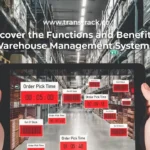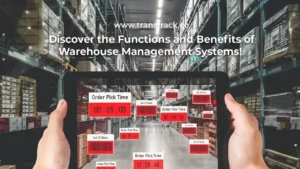Inventory Turnover: Definition, How it Works & Calculation Formula
Posted on September 1, 2023 by Nur Wachda Mihmidati

Inventory turnover is a financial indicator that shows how many times a company sells its inventory compared to the cost of producing goods (COGS) in a certain period of time. The company can then divide the number of days in that period, usually during a fiscal year, by its ratio to calculate the average number of days it takes to sell its entire inventory.
Inventory turnover comparison is useful for businesses in making better decisions regarding pricing, production, marketing, and purchasing. This is one of the efficiency measures that measures how effectively a company utilizes its assets.
This ratio is the time period required from when an item is obtained by the company until it is finally sold. A complete inventory cycle indicates that the company has successfully sold all purchased stock, with the exception of items lost due to damage or shrinkage. Get deeper in this TransTRACK article!
Benefits of inventory turnover
Why is understanding inventory turnover so important? Especially for retailers who have multiple sales channels, managing inventory volumes to match consumer demand is an absolute must, both in terms of profitability and operational efficiency.
And that ratio you have is the main marker. Understanding these key metrics is key to optimizing resource use in a sustainable manner.
There are many advantages. Understanding the inventory turnover ratio will result in increased profitability and enable more optimal business decisions to be made over a longer period of time.
Increase Profit
Understanding how your inventory turnover moves is an inevitable step to increasing profits. As one of the main performance measures (KPI), a crucial retail growth factor is inventory turnover, because an increase in inventory turnover will have a positive impact on profits. Companies with high inventory turnover can reduce carrying costs and are able to respond more nimbly to changes in consumer demand. This is a win-win situation.
Improving the Decision Making Process
Understanding how inventory turnover operates within your company will help you make more effective and smarter business decisions. Why is this important? You will have a clear understanding of which products need to be ordered or reordered.
You’ll also have insight into units that are underperforming, so you can devise strategies to address the situation, such as conducting price reviews, providing discounts, and the like. Additionally, you will be able to forecast order demand more accurately, which in turn allows you to make production and inventory decisions earlier.
If endless calculations make you feel overwhelmed, there’s no need to worry. Integrating the concept of inventory turnover as part of your daily retail management routine is not complicated. With the adoption of the right retail operating system, you will be able to manage your inventory without having to be burdened by calculating numbers on Excel sheets or—more complicated—on paper.
Calculation formula and how to calculate inventory turnover
We’ve already covered the “what” and “why” aspects, and now we’ll explore the “how.” How do retailers calculate their inventory turnover? Whether you use a special inventory management tool or apply conventional methods, here is the turn over ratio formula:
Inventory Rotation Formula A: Cost of Goods Sold
The first step, identify the total Cost of Goods Sold (COGS) from your company’s annual profit and loss report. Next, calculate the average inventory value by adding the initial balance and ending inventory balance for one month, then divide the sum by two.
inventory turnover formula = Cost of Goods Sold (COGS) / Average Inventory Value
Thus, if your company’s COGS is $90,000, and the average inventory value is $15,000, then your company’s inventory rotation ratio will be six.
How to Assess the Right Inventory Turnover Ratio?
Mastering how to interpret inventory turnover is a competency in itself. You may ask, “How do you determine good inventory turnover?”. Indeed, no two companies or conditions are alike. The optimal inventory turnover ratio varies from one retailer to another, but is usually in the two to six figure range.
When your inventory turnover ratio is within this range, it indicates that a balance between replenishment rate and sales rate has been achieved. The amount of inventory you have will be in accordance with existing demand. You will not experience a situation where there is too much or too little stock.
How to increase the inventory turnover ratio
Below are three ways you can do this:
Supply Chain Optimization
Choosing the supplier with the lowest price is not always the optimal option. Especially if the product plays a crucial role in your sales or is experiencing a surge in demand in the market, the availability of faster or guaranteed delivery times for essential items or components can be a more significant factor.
Adjust Pricing Strategy
Make price adjustments to achieve greater margins on products with high levels of demand, as well as to free up capital by reducing old inventory, which is often referred to as dead or obsolete inventory. If the product does not sell well, consider the option of donating the stock to a charity for potential tax deduction benefits, or selling it through alternative distribution channels.
Purchase Order Automation
Implementing automation will increase efficiency and have the potential to automatically reduce costs. However, if you combine it with an order management system that facilitates repeated orders of well-selling inventory so that it is always available, you will reap even more benefits.
Consider utilizing an inventory system that will automatically generate purchase orders that will then be reviewed by your purchasing team; the result is better control and less error reduction.
Conclusion
A company’s inventory turnover ratio indicates how often a company shifts its inventory in relation to its COGS over a certain period of time. This measure has important uses for companies in guiding decisions related to pricing, production, marketing, and procurement. This ratio has a very significant role in the retail environment.
Optimize your business efficiency with superior products in TransTrack “Perfect integration to other systems”. Enjoy easy access to a custom report portal that suits your needs, an ETA application that ensures accurate time estimates, fast and reliable data push services, and a client application that makes interaction with customers easy. With our integration solutions, increase productivity and better control your business!
Recent Post
Topic :
 Bahasa Indonesia
Bahasa Indonesia









